DIY Soaker Hose System (How To Install Soaker Hoses For A Greener Garden)
While I love my garden, I’m all about keeping it low maintenance whenever I can. Which is why learning how to install a soaker hose system with a water timer was awesome! Even better? It works equally well for my flower garden and my vegetable garden, in raised beds and garden beds, and keeps my plants watered even when I’m on vacation.
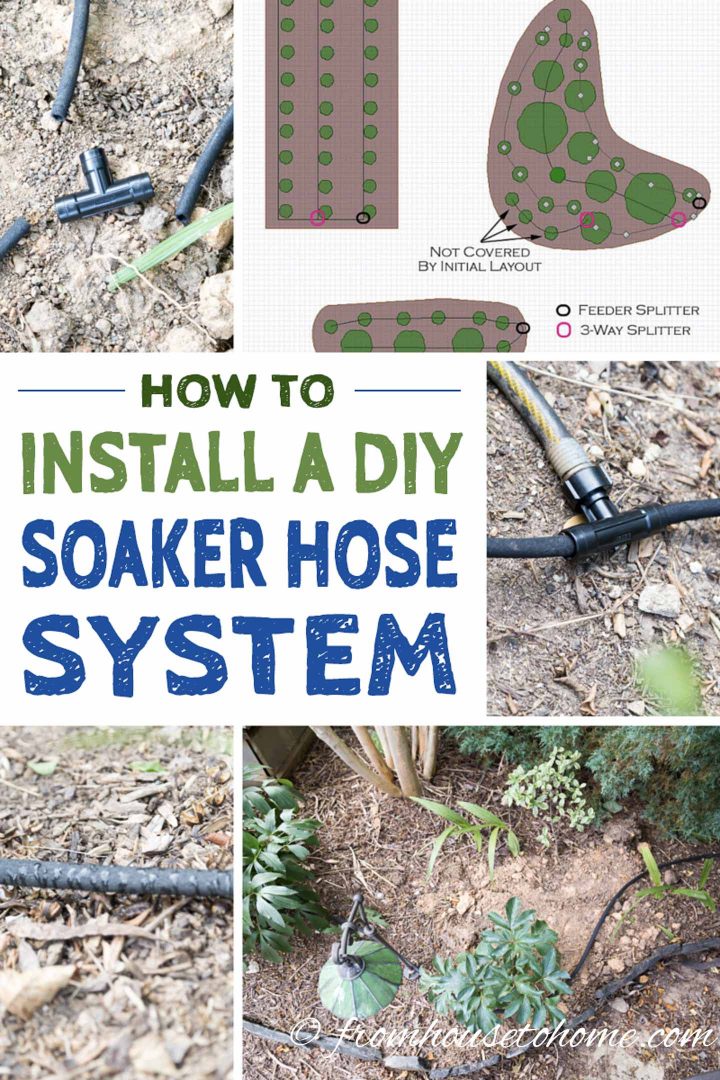
Well, it’s that time of year again…if you have a garden, it’s time to start watering!
I used to spend a lot of time lugging around a hose and sprinkler trying to make sure that all of the plants in my flower garden and raised beds were watered on a regular basis.
Since the sprinkler had to be placed in the middle of the lawn for the water to reach everywhere, I had to move it every time the grass needed to be mowed. And then put it back to water everything (and somehow I could never get it to go back in the exact right spot every time).
Not to mention that half the time I would forget to turn it on, or forget to turn it off.
And then there’s the fact that sprinklers are notoriously bad for wasting water. A lot of it evaporates before it even hits the ground, and you need to leave the sprinkler on for a long time to get the water to sink an inch into the soil. Which all added up to REALLY high water bills in the summer.
So I decided to put in soaker hoses to help with my garden irrigation. And discovered that they now have really affordable configurable soaker hose systems.
What Is A Soaker Hose?
Soaker hoses have little holes all along them that drip water out along their entire length using a really low level of water pressure…which means less water wasted (and lower water bills).
The configurable soaker hose kits come with hoses in up to 100 foot lengths and have multiple different kinds of ends and splitter connections that you let you put the hose where your plants are.
Add a water timer, and you now have an automatic garden watering system that will work even when you’re on vacation.
Read on to find out how to install a soaker hose system in your garden.
Soaker Hose System Supplies
Materials
Tools
- Scissors
How To Set Up A Soaker Hose System
For a high level overview of setting up your soaker hose, check out this short video:
Now we’ll get onto the details of how to install a DIY soaker hose system in your flower garden or raised bed that will work for your yard.
1 | Make The Soaker Hose More Flexible
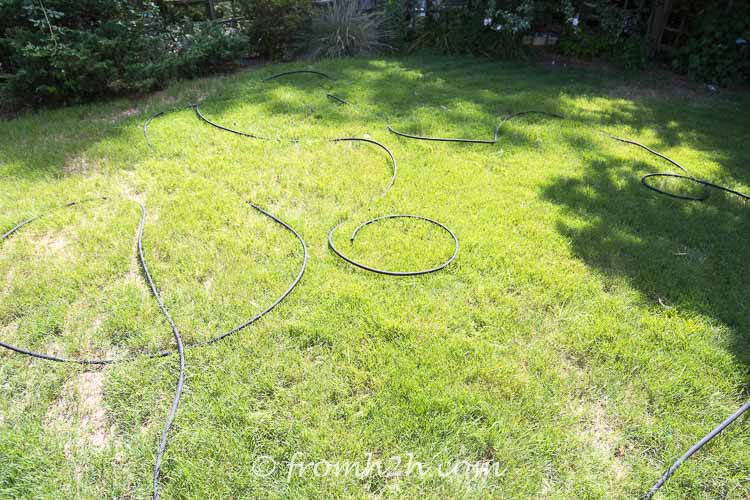
When the soaker hose comes out of the package, it will be tightly wound in a circle. And the hose is pretty stiff.
Both of these things make it a little difficult to work with straight out of the box.
To fix this problem, put the hose out in the sun for about an hour to soften it up a bit.
Then unravel it in the yard. This will get most of the turns out of it and make it easier to make it go where you want in your flower bed.
2 | Determine Soaker Hose Layout
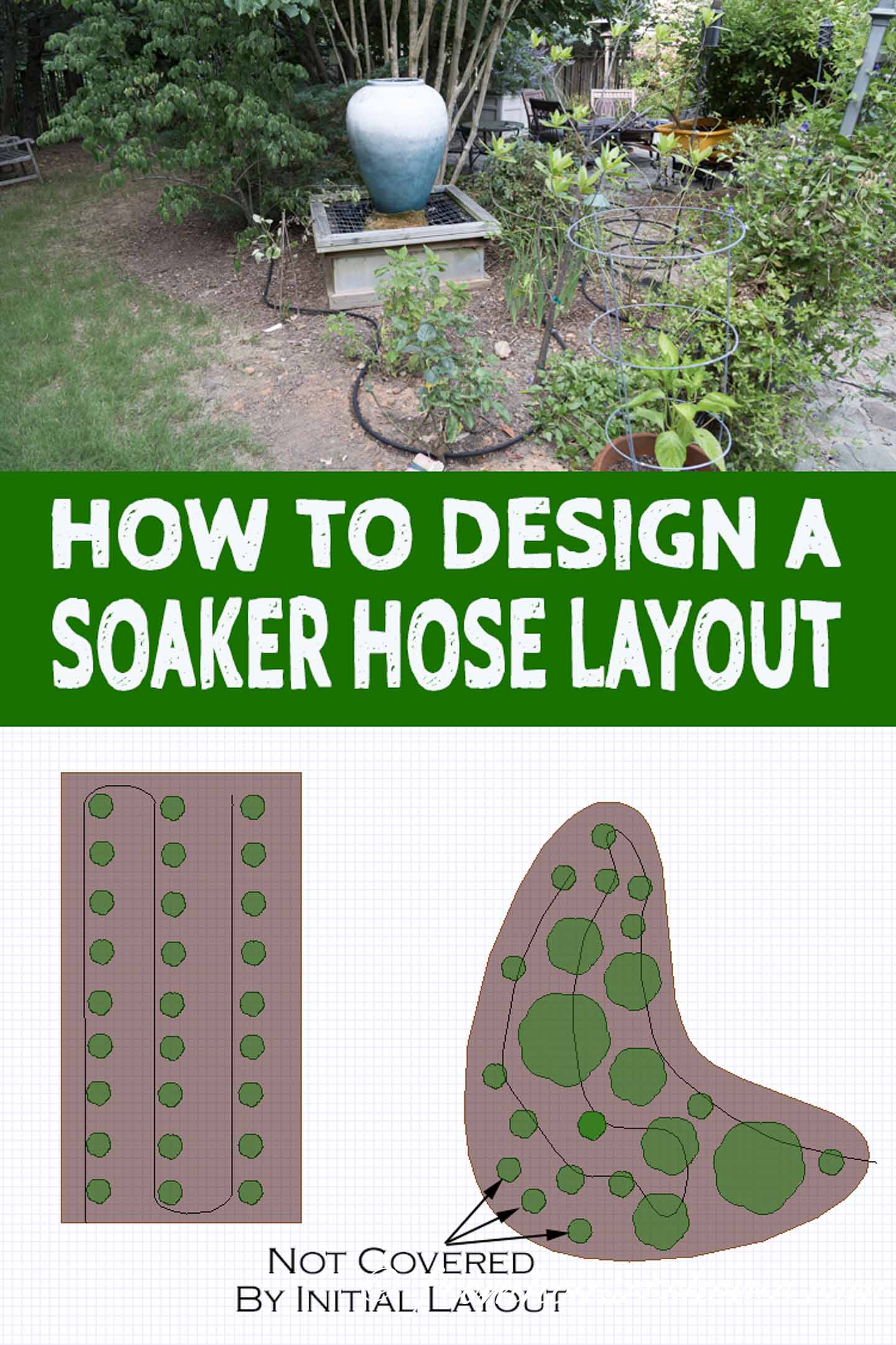
Next, you want to do the initial layout of the soaker hose in your garden bed.
Since the water from a soaker hose doesn’t disperse very far, the idea is to get the hose to directly pass by all of the flower plants or vegetables in your bed.
Start from the front and lay the hose down so that it goes over the root system of each of the plants in the front row.
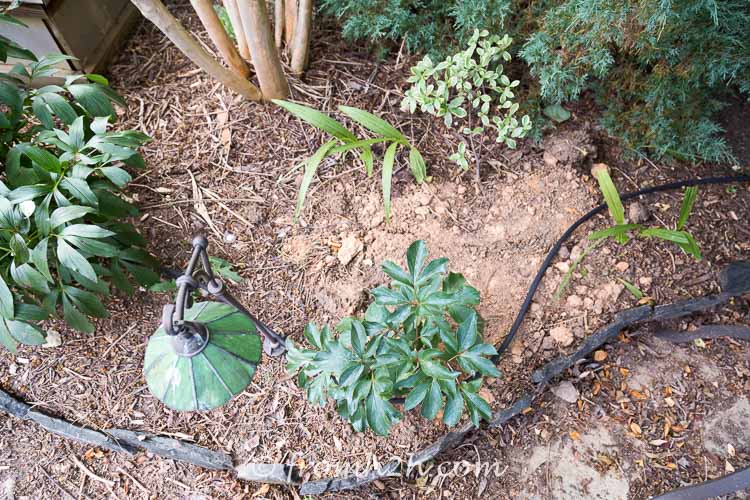
To prevent rot or disease, the hose should go close to the plants but not right up against the stems.
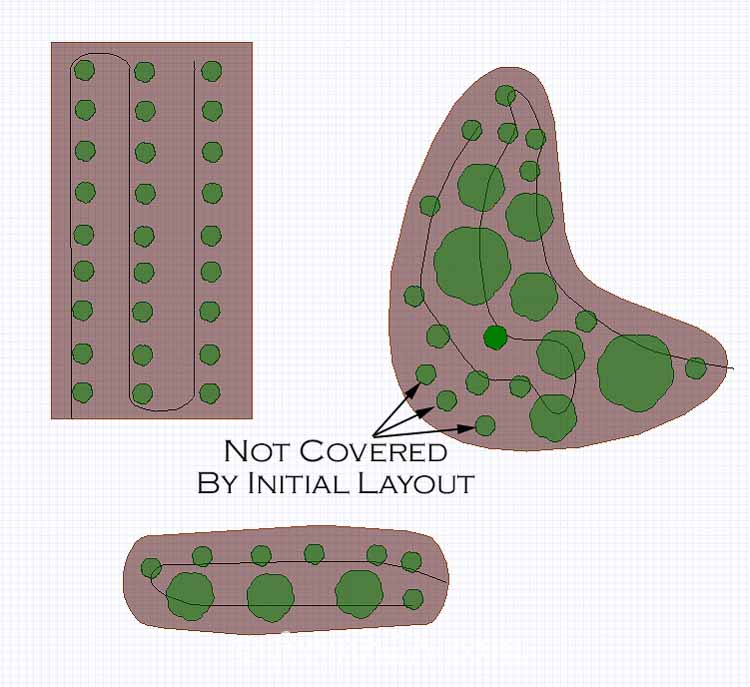
Then curve around and come back going over the root system of the second row.
And repeat for the third row…you get the picture.
If there are any plants that don’t fit well into a row, just make a note of them, we’ll address them later.
How to hold down the soaker hose?
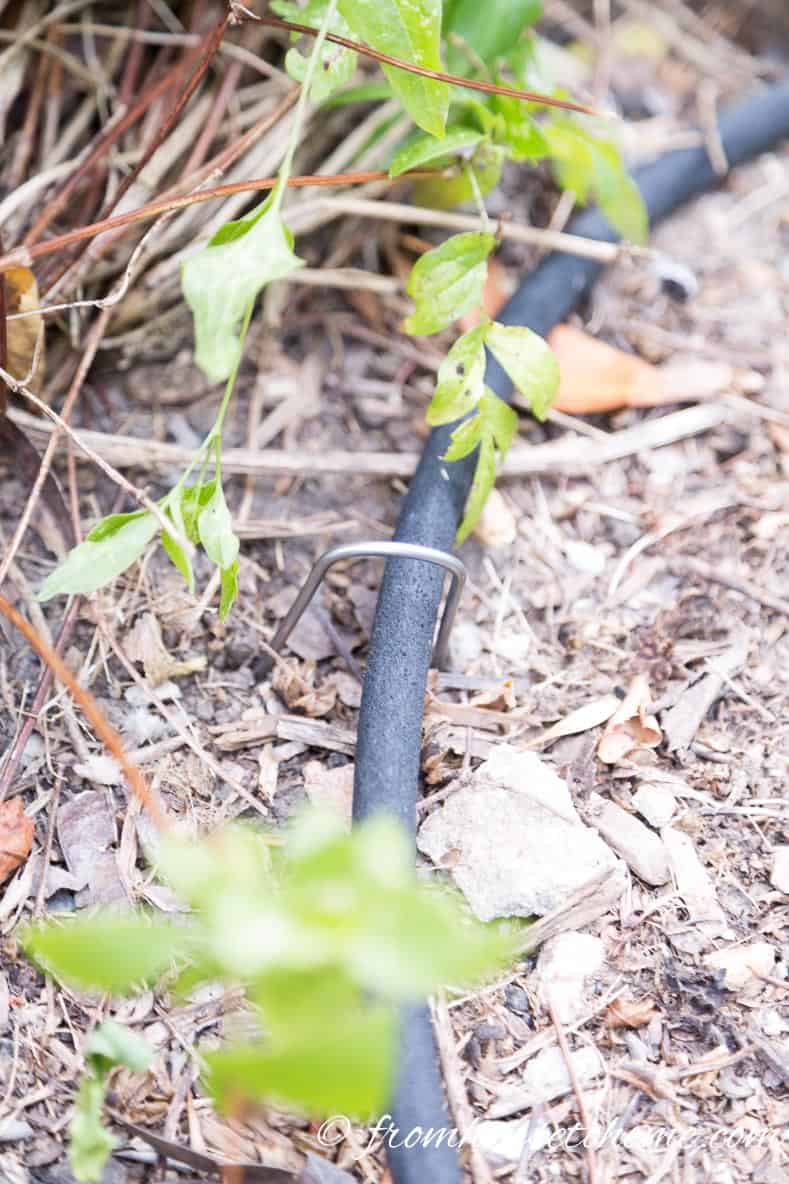
If there are spots where the hose doesn’t want to stay where you put it, use garden staples* (usually used for landscape fabric) to hold it in place.
3 | Shorten The Soaker Hose
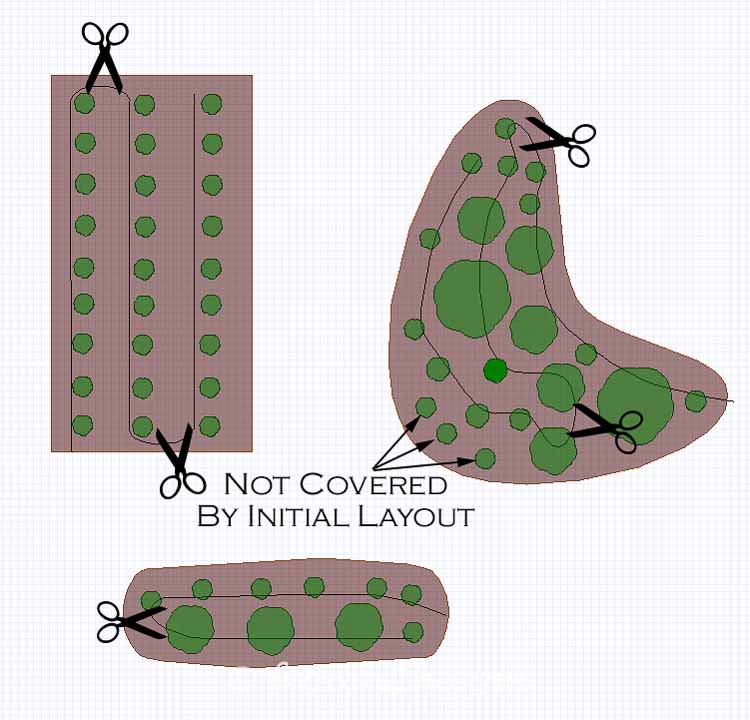
If you have a single, straight line of hose, then you can skip this step.
For everyone else, you will now want to figure out where to cut the hose so that you end up with several shorter lengths, rather than one big long length.
Although technically, you could leave a single 100′ length of hose in one piece, and use it to water your garden, it won’t distribute the water evenly.
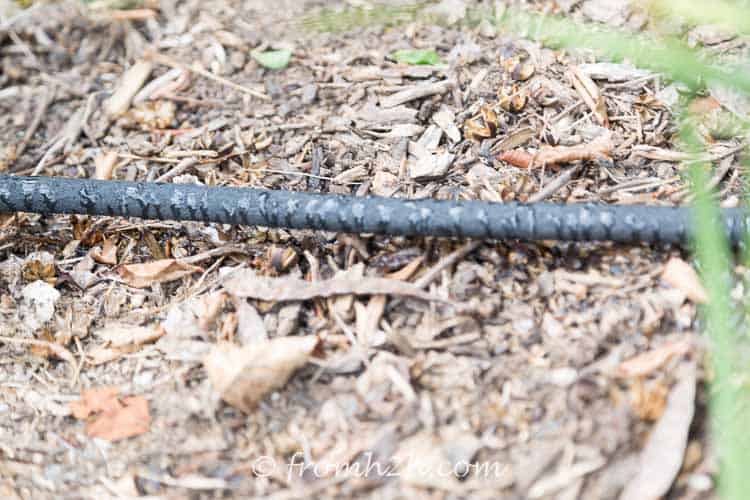
There is always more water coming out at the beginning of the hose.
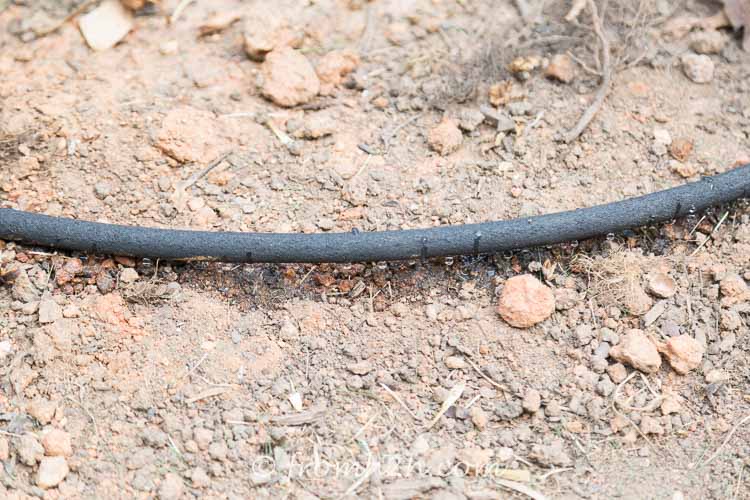
And less coming out at the end of the hose run.
To fix this problem you want to have shorter hose lengths where ever possible.
How long can a soaker hose be?
I try not to have a single length that is more than 25 feet long.
And thanks to the 3-way splitters that come with this soaker hose system*, you can do that easily.
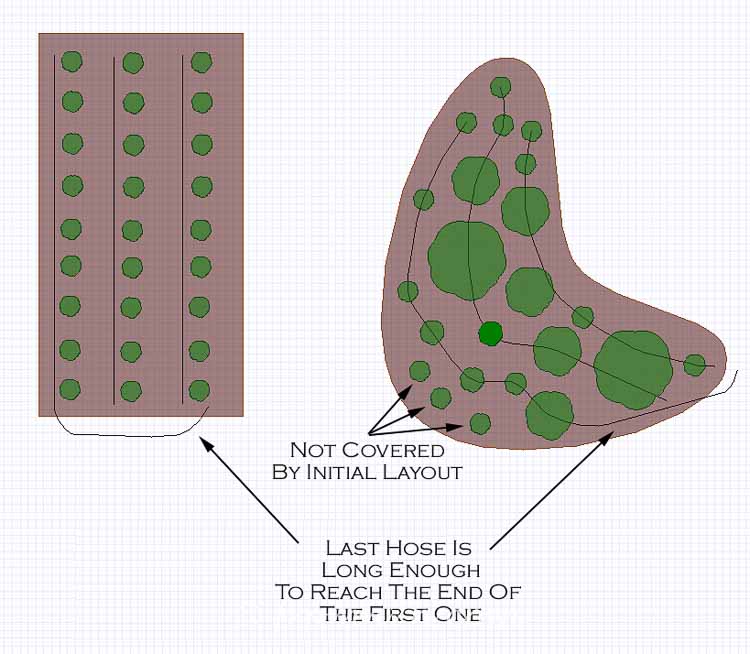
For now, use a pair of scissors to cut the hose so that you have two, three or even four ends meeting where your soaker hose will connect to the water source.
Make sure that the farthest hose is long enough to reach the beginning of the first hose. You will be joining these two together.
4 | Add the Soaker Hose Connections
Connect The Hose End
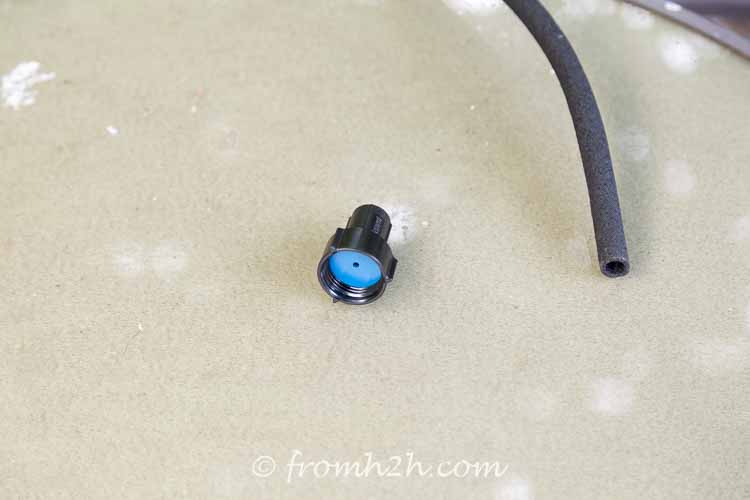
The next step is to install the female hose end that will connect to the water supply. If you only have one hose to connect up, use the single hose end like this one.
Joining the hose to the connector is simple…just push the end of the hose into the hole at the back of the connector (the opposite end to the blue disk). Make sure not to push it in too far or the hose will start to push out the washer.

To connect multiple water soaker hose ends to one water source, you will start with a feeder splitter. It is the T-splitter that can screw onto the end of a regular hose.
Don’t worry about the blue washer that looks like it will cut off most of the water supply…it is supposed to be there.
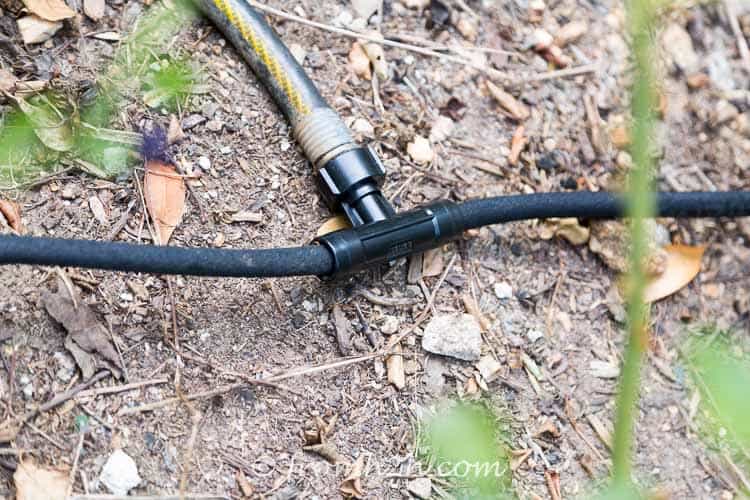
You will connect the ends of 2 of the soaker hoses into the ends of the splitter. If you only have 2 hoses, obviously those are the two to connect. If you have more than 2, use the beginning of the first hose and the beginning of the last hose (the one that you cut longer so that it would reach).
Push the hoses into the ends far enough that they won’t fall out. Be careful not to push them in too far or they will block the flow of water coming in from the hose.
Install 3 Way Splits Where Required
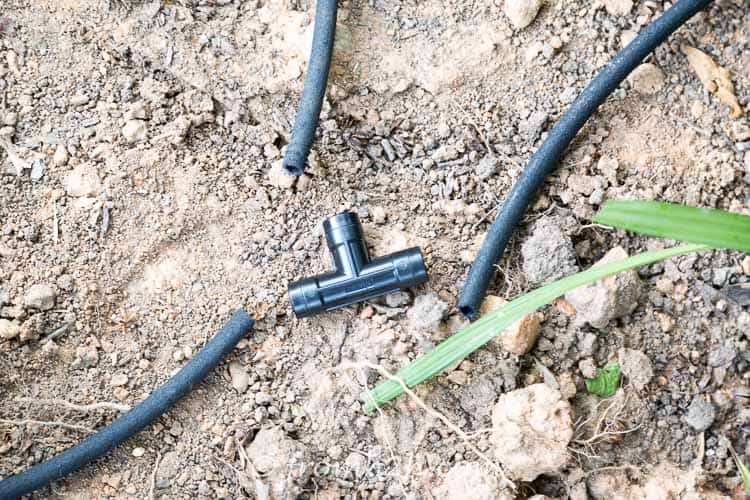
Now install any 3-way splitters that need to go in the middle of the hose.
These are the ones that have smooth ends on all three sides.
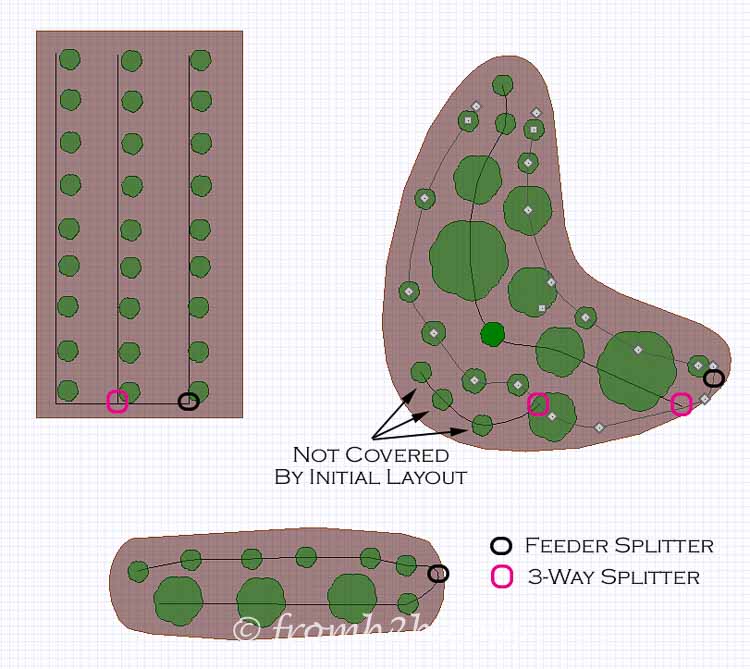
If you had more than 2 hoses meeting up on the previous step, use these to attach the additional hose lengths to the long run.
You will also do this if you had any outlying plants that were not being watered by the existing hoses. For these ones, cut an additional piece of hose that is long enough to cover the new area.

In both cases, cut the existing hose where you want to make the join.
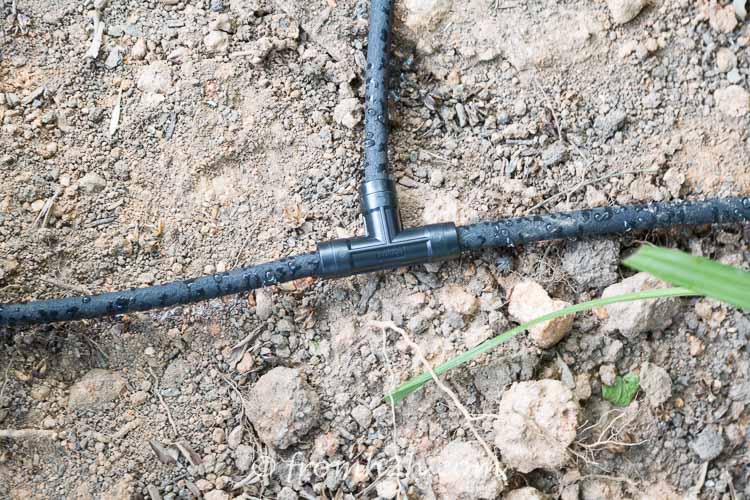
Then attach the 2 ends of the hose that were just cut plus the end of the adjoining hose into the 3 open holes in the splitter. Again, make sure not to push the hoses in too far since they can block the flow of water in the other direction.
Add Soaker Hose End Pieces

The last step is to close off the loose ends of all of the hoses.
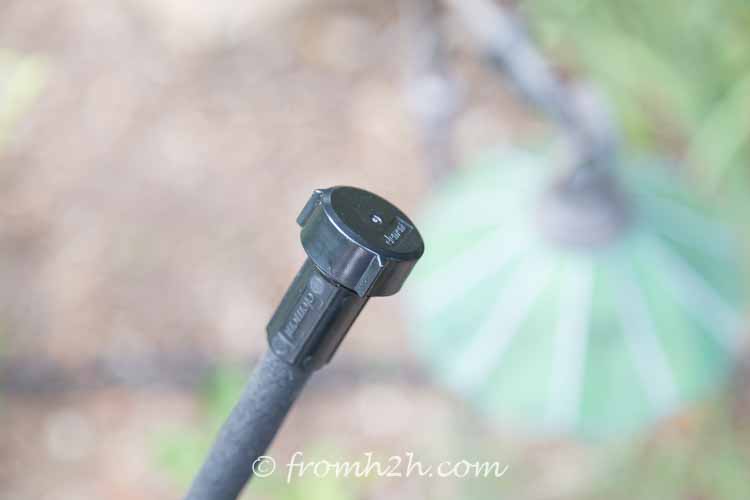
Use the ends with the cap on them to do this. Again, just push the hose into the hole at the end of the connector.
5 | Test and Troubleshoot Your System
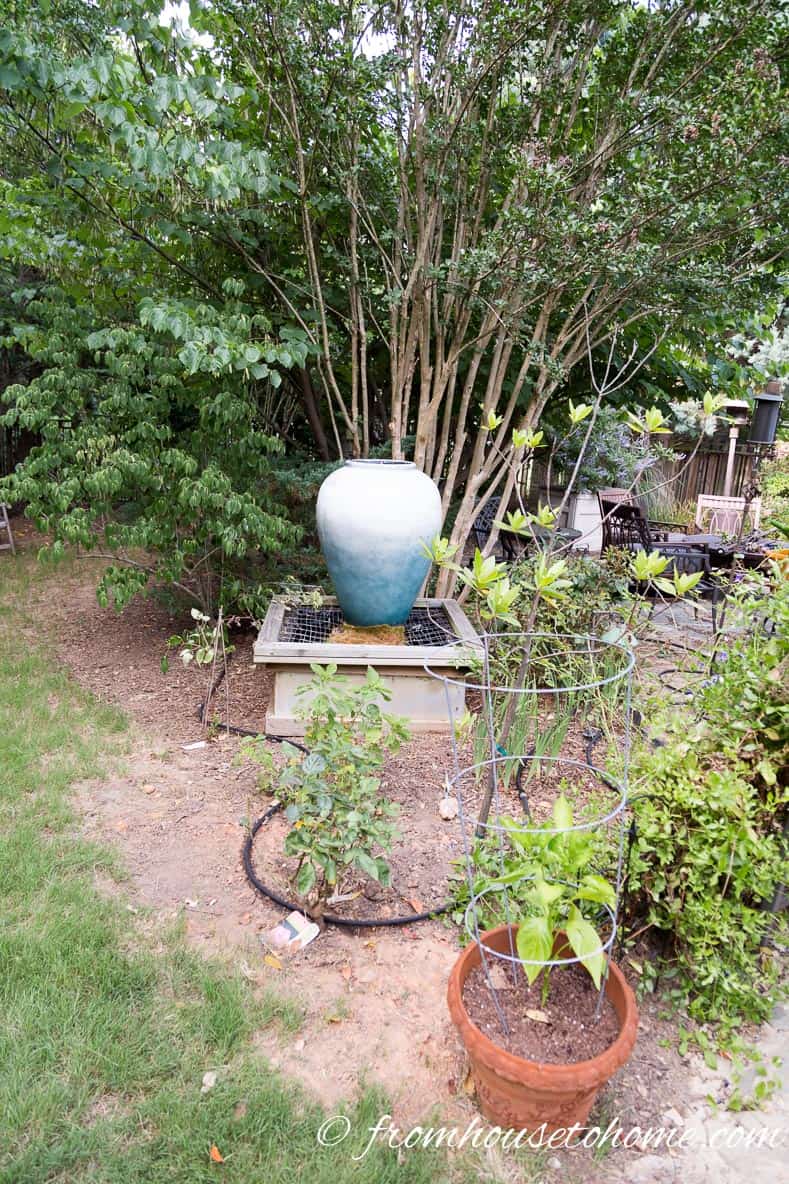
Now, you’re ready to test your irrigation system!
Turn on the water and make sure that water is coming out from all of the hoses.
If you see areas that don’t have water dripping from the hoses check the following:
- Check if there is a connector where a hose is pushed in too far, blocking the flow of water. To fix this, you can pull the hose out a bit. Rotating it back and forth while you are pulling makes it come out a little easier.
- Make sure the ground is fairly level. If the hose has high and low spots, the water will tend to pool and not distribute evenly.
- Check that you have made the hose runs as short as possible. If there is less water flowing at the end of the hose than there is at the beginning, you may need to shorten it some more.
6 | Add a Soaker Hose Timer
If you really want to “set it and forget it”, adding a soaker hose water timer* to your watering system is the way to go.
Program it for the days and times that you want watering to be done, and you never have to worry about watering again!
7 | Cover The Soaker Hose With Mulch
While covering your soaker hose with mulch is not absolutely necessary, it does help to keep the water from evaporating.
Which means your garden stays watered longer, your plants are happy…and it saves money on your water bill.
How Long To Run Your Soaker Hose?
Once you have your soaker hose is set up, you may be wondering how long to run it.
The answer is…it depends…
In my garden which has mostly clay soil, I run it for about 2 hours once a week. That’s because it takes longer for the water to soak into the clay. But once the soil is wet, it also takes longer for it to dry out.
If you have sandier soil, you will probably want to run it for a shorter duration more often (eg. 1 hour, twice a week).
The best way to figure it out is to try it in your garden. After watering, check to see how far down the water has soaked in. The moisture should have penetrated several inches deep.
Then adjust your run time accordingly. This is also where a water timer will make your life much easier, since you’ll be able to make sure you get the right amount of water to your plants (even when you’re on vacation).
Other Gardening Ideas You Might Like
- How To Create A Low Maintenance Garden
- How To Install Landscape Lighting
- Tips For Designing a Garden That Works
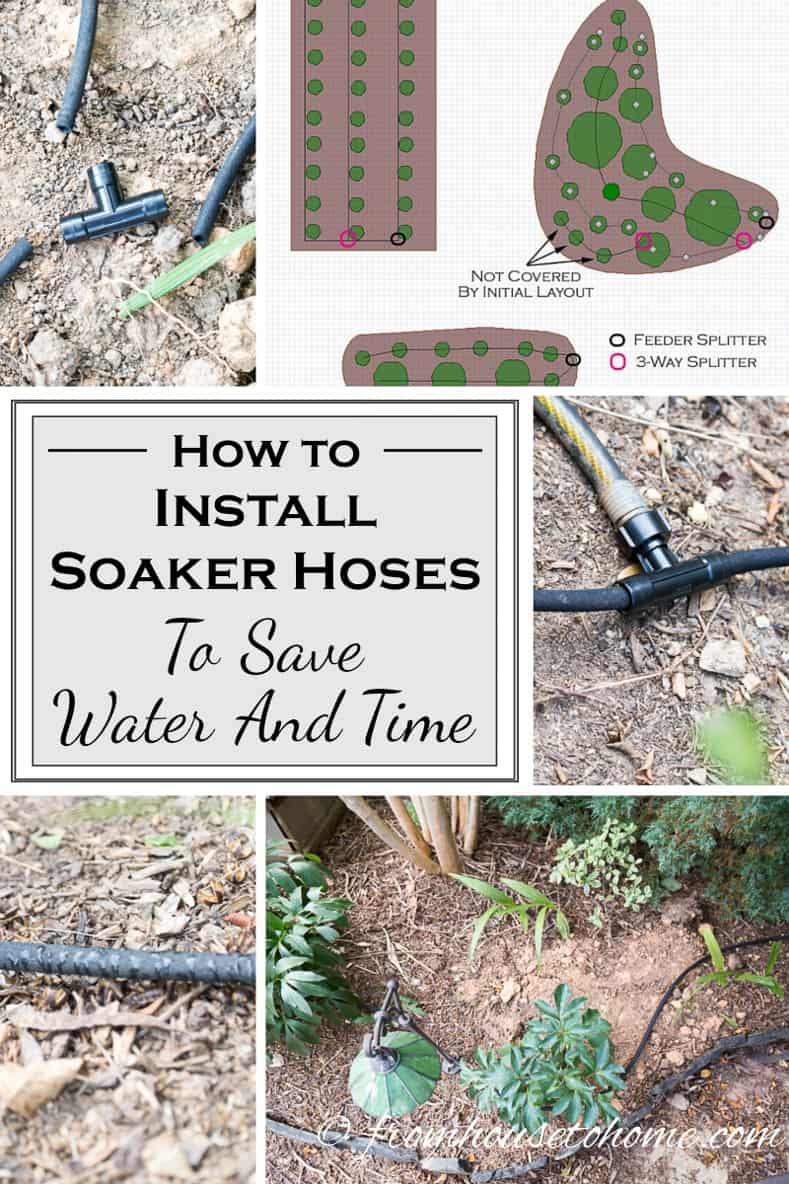
Have comments or questions on how to install soaker hoses? Tell us in the section below.
This post was originally published on June 22, 2016 but was updated with new content on November 23, 2024.

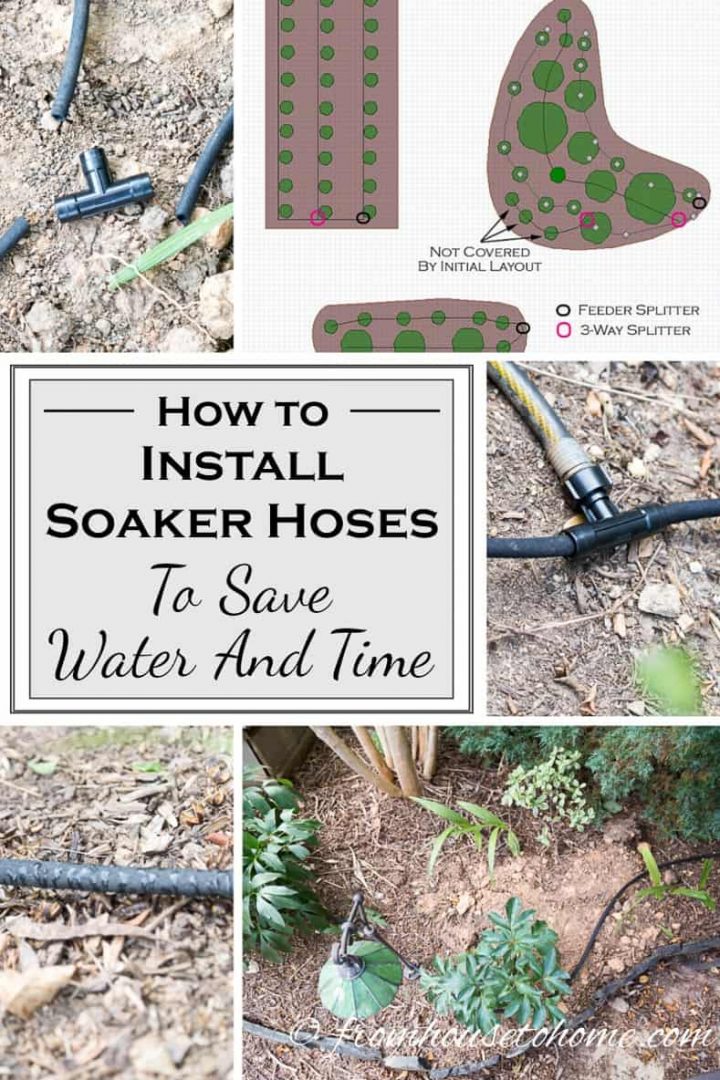
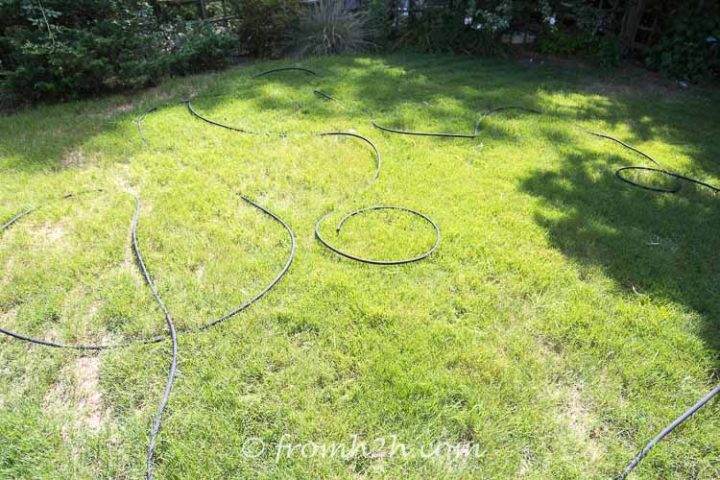


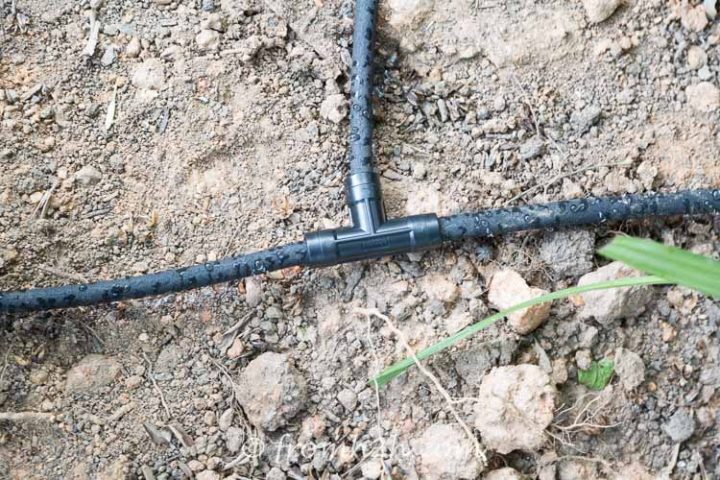
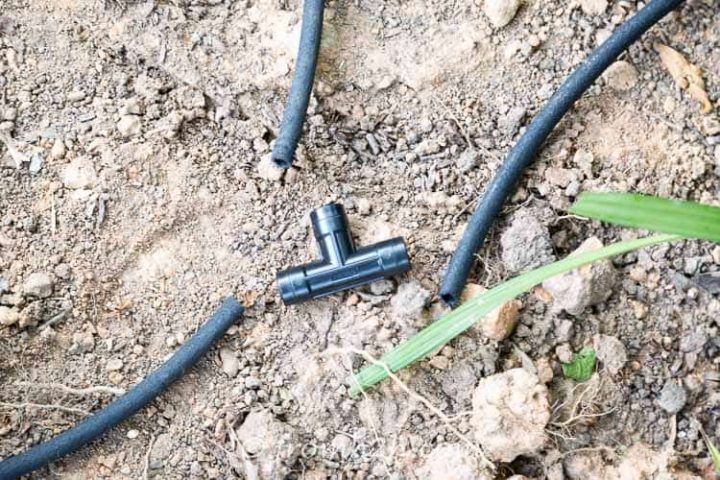
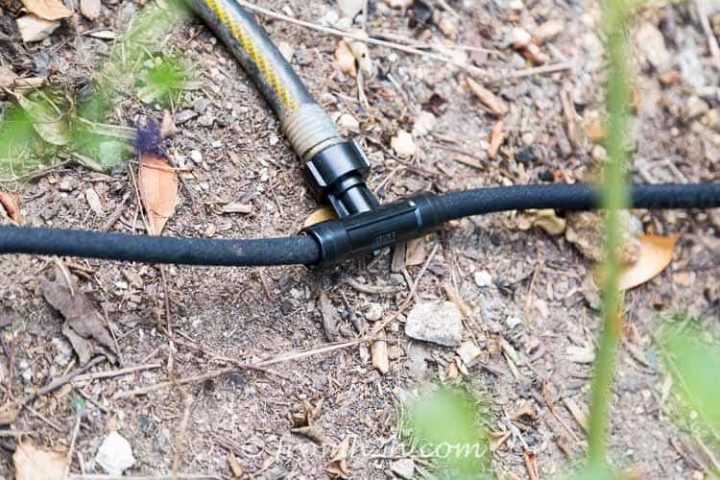
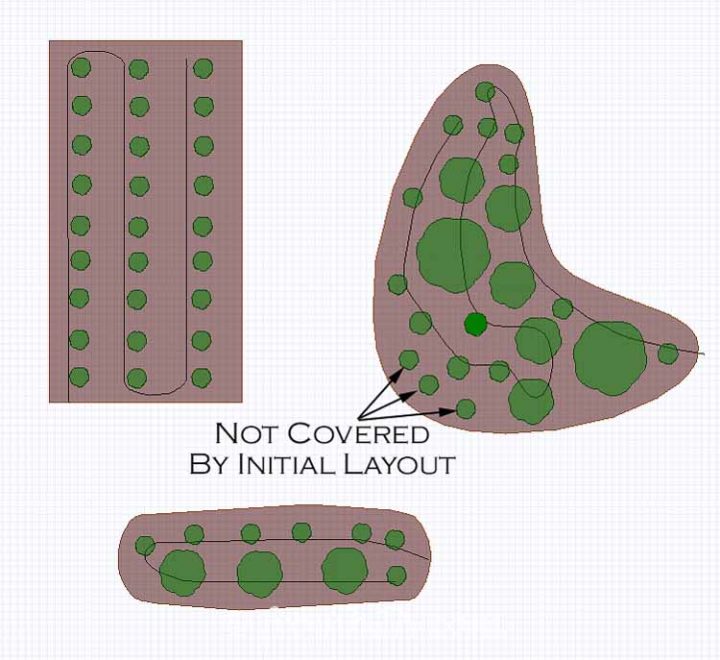
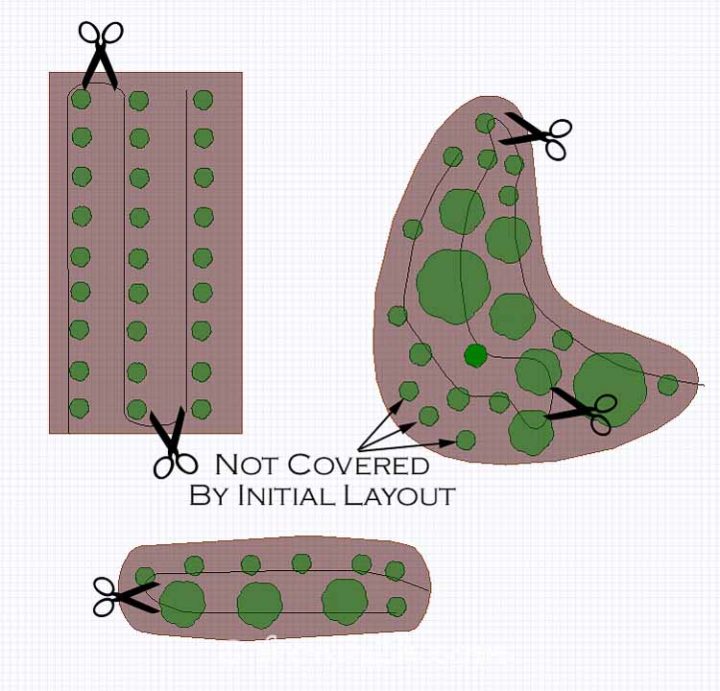
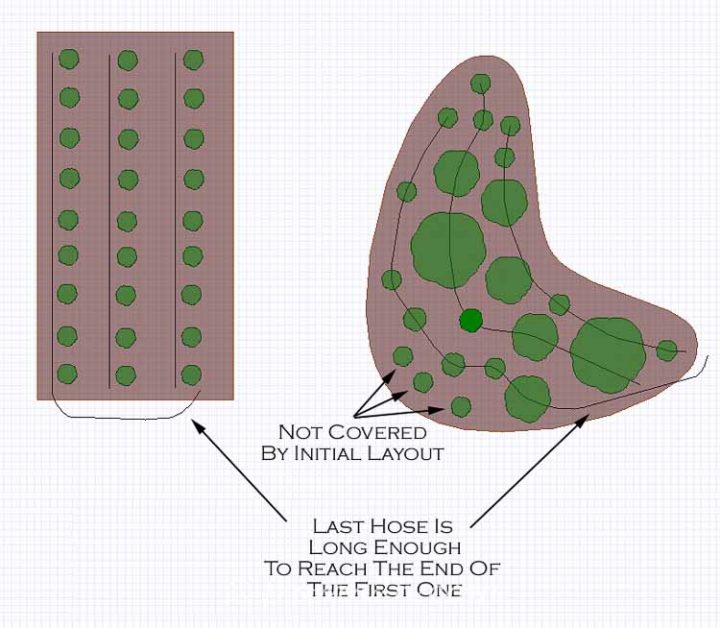
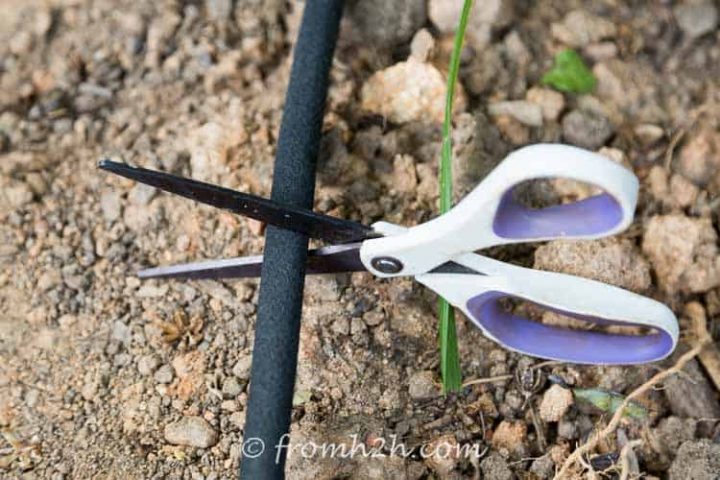
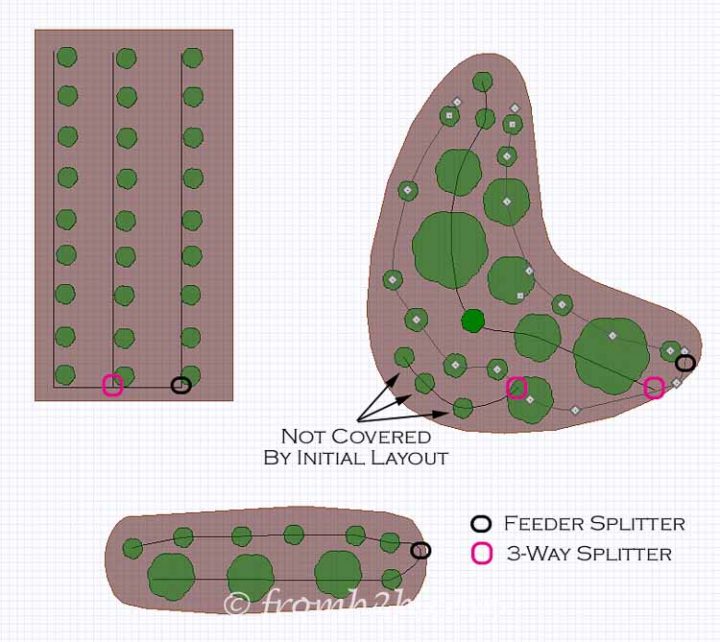
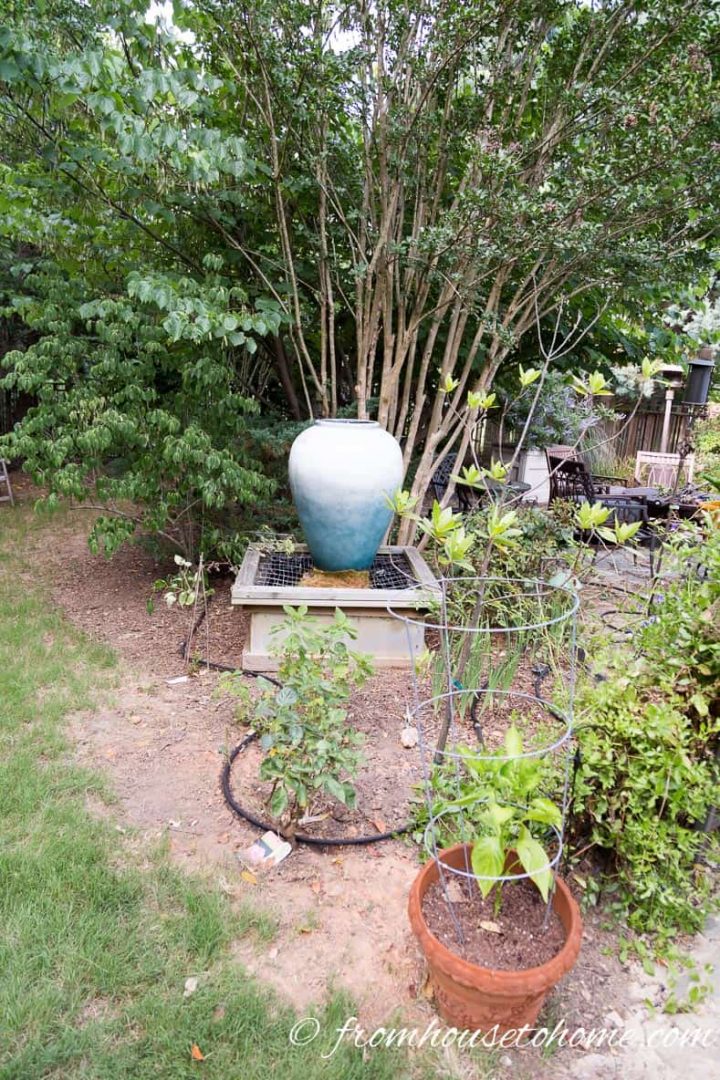
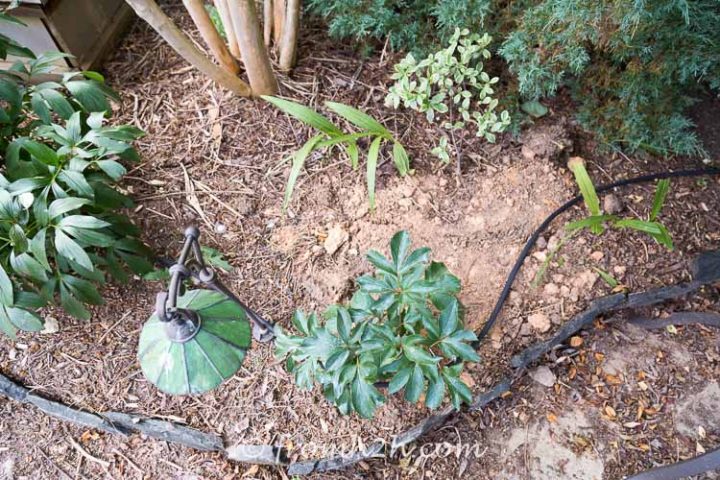


i will highly recommend this.
Thanks, Ryan! It works very well for me, so hopefully will help others as well 🙂
I have a question about using a soaker hose system under landscaping fabric and then covering it all with mulch. Is that a good idea? Or should the soaker hose go above the landscaping fabric and then mulch on top of that?
Hi Misty…I haven’t tried putting the soaker hoses under landscape fabric, but I think that would work well. That way the water is going directly into the soil without having to soak through the landscape fabric first.
What a great idea to save time and money. I will definitely try this but I will use a bluetooth timer so I can delay it remotely on rainy days saving even more money. Great article as always. Thanks!
Thanks, Mike. I didn’t know bluetooth timers were a thing. I’ll have to look into getting one of those 🙂